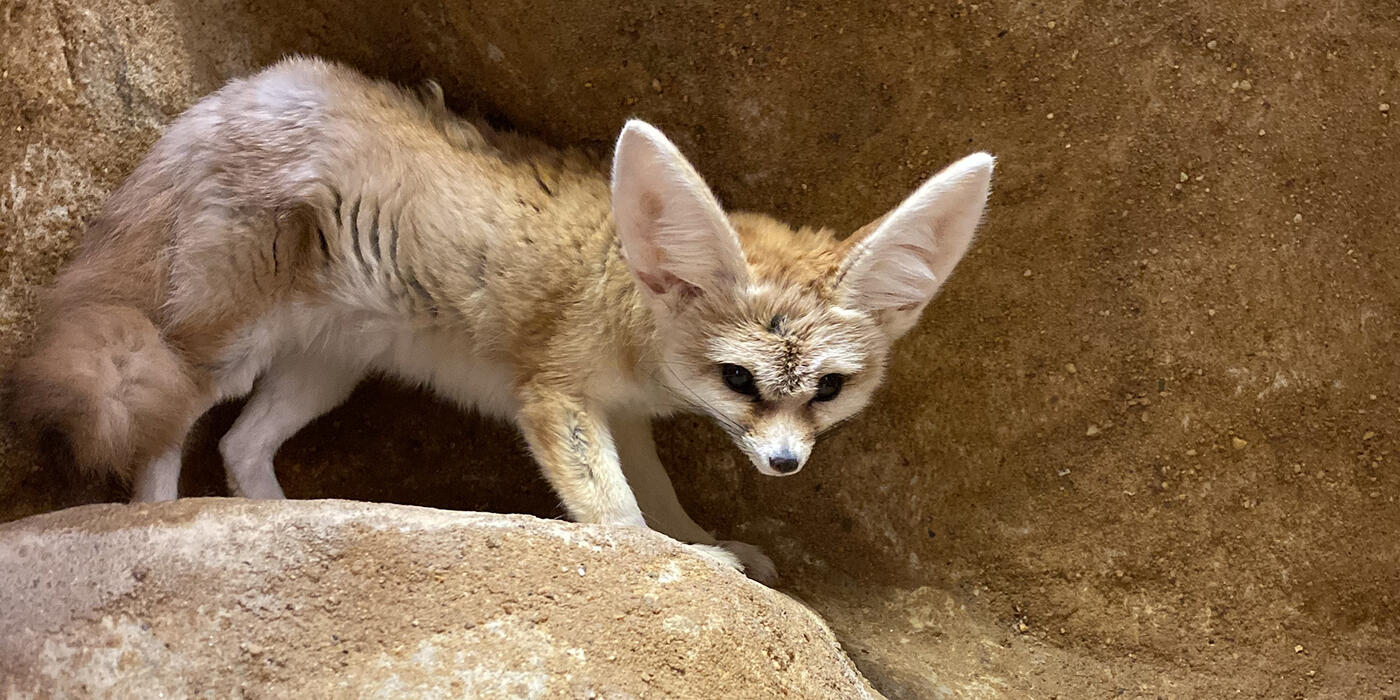How to Train a Coati
Two-year-old coati sisters Quinn and Ivy are always on the move. So how did their keeper, Kara Ingraham, train them to sit still for injections? In this Q&A, Ingraham shares how patience, perseverance and a little help from the Enrichment and Training Committee helped her break through the training barrier and teach the coatis to voluntarily participate in their own care.
What behavior were you trying to train?
The coatis were already trained to do a variety of behaviors that help with their husbandry care. This includes climbing up on a scale so we can keep track of their weights, voluntarily entering a crate in the event we need to transport them to the veterinary hospital, and touching their nose to a target and holding still so we can get a good look at their body condition. Their ability to successfully do these behaviors showed us that they were ready for the next step—medical training. The coatis receive vaccinations every year, so we wanted to train them to receive injections voluntarily.
How did you train this behavior?
We first trained the coatis to enter a narrow chute, which helps position them correctly for the injection. To desensitize them to the prick of a needle, we first used our fingers to gently poke them on the thigh. Once they were comfortable with that, we lightly touched them with a pencil to simulate the prick of a needle. We tell them that the “needle” is coming with a verbal cue: touch. The door on the chute always remains open so they have the option to leave. If they stay still, they receive a reward in the form of food.
Training in Action l Animal keeper Kara Ingraham trains coati Quinn to voluntarily enter a training chute for injections as part of the Zoo's enrichment and training program.
What is their reward for participating?
We reward the coatis with food that is part of their normal diet. This can be kibble, raw meat and fruit. Their favorite foods, though, are earthworms and hardboiled eggs. We save those rewards for when they successfully do husbandry or medical behaviors that are more challenging to master, including injection training.
Why is it important for keepers to train this behavior?
Training Quinn and Ivy to receive injections voluntarily means that they can participate in their own healthcare. Positive reinforcement training is all about building a trusting relationship with our animals so they can exert more choice and control over how they spend their time. If we did not train this behavior, the coatis would either need to be anesthetized for every vaccination or be restrained while awake. Training offers the coatis a much less stressful experience (because it is all on their terms) and helps them form a positive view of the people that take care of them.
What issues did you encounter while training this behavior?
Coatis are always on the go, so getting them to sit still is challenging. It took time and patience for the coatis to understand that not only did we want them to enter the chute, but then stand in the chute for a certain amount of time. We had to work up to them standing still with the “needle” touching for about 10 seconds. This ensures that when the veterinarians arrive, the coatis do not move while they are getting their shots.
When it came time to get their vaccinations, Quinn did great on the first try, but Ivy was wary of the veterinarians and did not want to participate. Because we use positive reinforcement training and it is the animal’s choice whether to participate or not, we respected her decision. We needed to come up with a plan that would help Ivy work up her confidence and comfort level around folks who were not her keepers.
How did the Enrichment and Training Committee help you solve this problem?
We wanted to resolve Ivy’s reluctance to approach strangers, so we reached out to our fellow Enrichment and Training Committee members and invited them to observe her training sessions. More than 10 keepers participated, and seeing so many new faces helped Ivy become more comfortable and relaxed. Two weeks after Quinn received her vaccine, Ivy went into the chute for our veterinarians on the first try!
It is a great accomplishment for Quinn and Ivy that they received their rabies shots voluntarily in a relatively short amount of time. They did not even flinch or react to the injection at all.
How often do you do this training with the coatis?
Prior to giving Quinn and Ivy their first vaccinations, we trained them twice a day—in the morning and the afternoon. Now that they are consistently participating in this training, we only need to do it once or twice a week to reinforce what they have learned. We will mix this behavior in with other training we do with the coatis to keep these sessions stimulating and interesting for them.
This story was featured in the May 2018 issue of National Zoo News. Support excellence in animal care at the Zoo with a donation to the animal enrichment program.Related Species:


